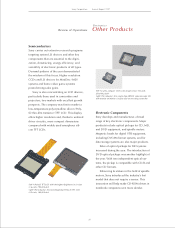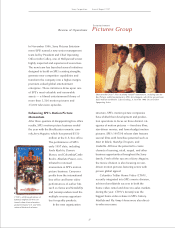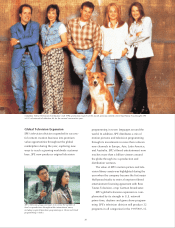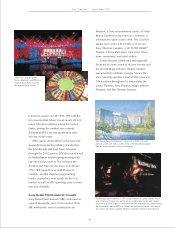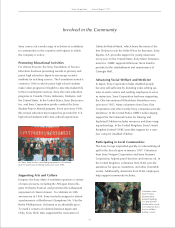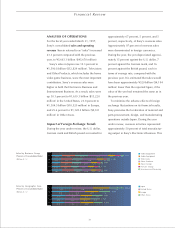Sony 1997 Annual Report Download - page 32
Download and view the complete annual report
Please find page 32 of the 1997 Sony annual report below. You can navigate through the pages in the report by either clicking on the pages listed below, or by using the keyword search tool below to find specific information within the annual report.
30
Sony Corporation Annual Report 1997
Concerned for the Environment
Recognizing that environmental protection is one of
the most pressing issues facing mankind today, Sony
incorporates a sound respect for nature in all of its
business activities. Based on this philosophy, Sony’s
Environmental Conservation Committees in Japan, the
United States, Europe, and Asia have devised action
plans to guide environmental activities in conformity
with local needs and applicable regulations. A key
focus throughout the Sony Group worldwide is on
achieving certification under international ISO-14001
standards for environmental management. As of May
1997, 39 Sony production facilities had obtained
certification. The goal is for all production facilities to
be certified by March 31, 1998.
Reducing the Environmental Impact
of Products
Sony is striving to reduce any negative impact its prod-
ucts may have on the environment, from the time they
are used until their disposal. Comprehensive product
assessments are a means of realizing this goal. Estab-
lished during the year, the Greenplus 2000 project rep-
resents a new framework for this drive. The objective of
Greenplus 2000 is to incorporate environmental con-
siderations into the planning of every Sony product by
the year 2000. Product design is another thrust. Here,
the company is emphasizing areas such as energy
efficiency, the decreased use of materials with high
environmental impact, and shorter disassembly times.
Promoting a New Recycling Technology
Sony is working at the design level to support greater
recycling of its products, such as using recyclable
materials, labeling material properties, limiting the
number of parts used, and adopting structures that are
easily dismantled. During the year, Sony developed a
technique which enables the plastic from video cas-
sette shells or other products to be used as a condens-
ing agent in water-treatment applications.
Regional Activities
In the United States, Sony Electronics Inc. is partici-
pating in the U.S. Environmental Protection Agency’s
Energy Star Buildings Program. This requires that the
company promote greater energy efficiency at all its
offices and plants as well as undertake full-scale
recycling efforts. In Europe, Sony International (Europe)
GmbH is active in CARE Vision 2000, a EUREKA
(European Research Coordination Action) environ-
mental research project. As part of this program, Sony
International (Europe) handled administration for the
CARE Innovation ’96 international congress held in
November 1996. Staff members from Sony offices in
Asia represented the company at an international
conference to develop ISO-14000 standards.
Sony developed a technique that uses limonene, a substance
extracted from citrus rinds, to dissolve styrene foam for reuse
as polystyrene. Working with authorized dealers in the Tokyo
area, the company began collecting and recycling waste
styrene foam in October 1996.
Designed using fewer
parts, this color TV is
energy efficient and easy
to disassemble.



